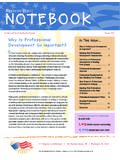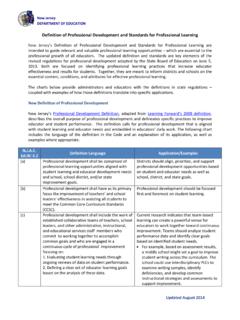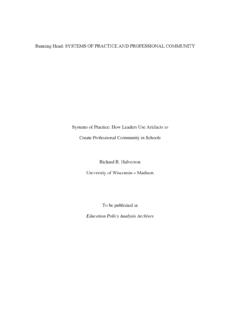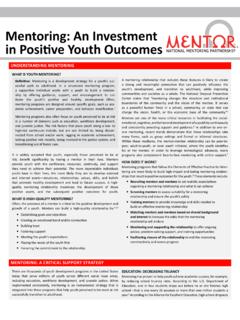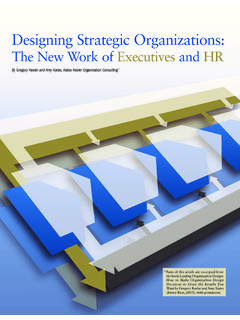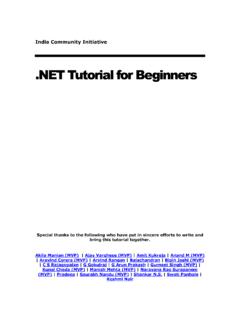Transcription of THE SUPERVISORY RELATIONSHIP - achievebalance.org
1 The SUPERVISORY RELATIONSHIP Overview Part I The influence of individual and developmental differences Processes and issues of the SUPERVISORY triad and dyad Part II Conflict: When problems arise in the supervisor-supervisee RELATIONSHIP Copyright 2007 All About the Family, LLC Questions As a supervisor, how will you develop the RELATIONSHIP into one of mutual trust and respect? What are some ways you may have displayed resistance as a supervisee? As a supervisor, what can you learn from this and apply to your work with reluctant supervisees? Copyright 2007 All About the Family, LLC Personal and Interpersonal Issues in Supervision The RELATIONSHIP between the supervisor and supervisee is the foundation for the work that will occur in supervision Three essential components Interpersonal structure of the RELATIONSHIP Phases of the RELATIONSHIP The SUPERVISORY contract Copyright 2007 All About the Family.
2 LLC Phases of the RELATIONSHIP Early phase Clarifying the nature of the RELATIONSHIP Developing ways to collaborate effectively Designing a supervision contract Selecting teaching interventions Developing competencies Designing treatment plans Copyright 2007 All About the Family, LLC Phases of the RELATIONSHIP Mature phase Emphasis is on increasing the individual nature of the RELATIONSHIP Promoting social bonding Behavior becomes less role bound Supervisees develop skills of case conceptualization Increase supervisee s level of confidence Copyright 2007 All About the Family, LLC Phases of the RELATIONSHIP Termination phase Supervisees understand the linkage between theory and practice more fully Less need for direction from the supervisor Summative evaluation occurs including a discussion of the meaning of termination, feelings, and thoughts Future and developmental goals are discussed Copyright 2007 All About the Family, LLC Personal and Interpersonal Issues in Supervision Copyright 2007 All About the Family.
3 LLC Supervisor-supervisee RELATIONSHIP Power and authority Parallel process Personhood Supervisor-supervisee RELATIONSHIP It is the supervisor s responsibility to develop an atmosphere conducive to learning Acceptance of personhood of the supervisee Sense of safety and being cared for Can supervision be effective in the absence of a positive and productive supervisor-supervisee RELATIONSHIP ? Yes, but it may not be as successful Copyright 2007 All About the Family, LLC Essential elements of the supervisee-supervisor RELATIONSHIP Trust: the ability to rely on another with a certain sense of predictability Supervisors can: discuss with the supervisee what both can do to create a trusting SUPERVISORY RELATIONSHIP Encourage their supervisees to bring up any concerns they have about trust during supervision sessions Self-disclosure.
4 Willingness of the supervisor and supervisee to be open to and discuss all issues that may arise in the SUPERVISORY RELATIONSHIP Used as a method for building an emotional bond, working alliance NOT to work on personal issues Copyright 2007 All About the Family, LLC Essential elements of the supervisee-supervisor RELATIONSHIP Transference and countertransference In the case of transference (ex: anxiety about doing well for the supervisor), supervisor must: Be aware of the phenomenon Assist the supervisee in developing a sense of competence and problem-solving ability NOT directly challenge supervisee about transference issues Copyright 2007 All About the Family.
5 LLC Essential elements of the supervisee-supervisor RELATIONSHIP Countertransference may be categorized in one of four areas General personality characteristics Inner conflicts reactivated by the supervision situation Countertransference reactions to the individual supervisee Countertransference to the supervisees transference Common reactions/feelings Help and rescue the supervisee or dislike the supervisee Supervisor must Be self-aware Consult with a colleague or consultant NOT the supervisee it may be too overwhelming ** Copyright 2007 All About the Family, LLC Essential elements of the supervisee-supervisor RELATIONSHIP Diversity issues Cultural experience Gender Cognitive and ego development Professional identity Experience level Theoretical orientation Self-presentation If supervisors do not address these factors as they become relevant, this will certainly weaken the trust level on the part of supervisees Copyright 2007 All About the Family, LLC Essential elements of the supervisee-supervisor RELATIONSHIP Appropriate boundaries: extending the boundary beyond supervision can complicate the SUPERVISORY RELATIONSHIP Supervisors must take full responsibility for.
6 Determining the limits of the RELATIONSHIP Taking action when they believe the boundaries are unclear Copyright 2007 All About the Family, LLC Essential elements of the supervisee-supervisor RELATIONSHIP Power and authority Power: the ability to influence or control others Authority: the right to do so Feminist and person-centered models Supervisor role: Evaluating Providing the evaluation to licensing boards and employers Supervisors must: Inform supervisees of the evaluative nature regardless of theory Be clear about goals, expectations, evaluation criteria, and limits of confidentiality in supervision Copyright 2007 All About the Family, LLC Essential elements of the supervisee-supervisor RELATIONSHIP Parallel process Pay attention to the phenomenon to facilitate effective supervision Encourage supervisee s personal insight Personhood Beliefs, values, attitudes, gender, ethnicity, and spirituality Be aware of bias and tendency to impose values Religion, abortion, marriage and divorce, sexual orientation, parenting, spirituality, the change process, suicide.
7 End-of life decition Value free supervision is virtually impossible!! Be aware, be willing to discuss issues openly as they arise, model value exploration in a way supervisees can use with clients Copyright 2007 All About the Family, LLC Characteristics that facilitate or hinder the supervision process Copyright 2007 All About the Family, LLC Outstanding supervisors Are self-aware, open to feedback, humble, and recognize there is always something to learn Supervisees are active problem-solvers, and exude confidence and calmness Less-than-outstanding supervisors Are rigid, closed to feedback, act as if they have all the answers, use supervision as a forum to display knowledge.
8 Conflict with supervisees is common. Characteristics that facilitate or hinder the supervision process Copyright 2007 All About the Family, LLC Supervisor characteristics (Lowry) in order of importance Good clinical skills/knowledge An accepting SUPERVISORY climate Desire to train/investment in supervision Matching supervision with supervisees development Providing constructive feedback Empathic Flexible and available Possessing good RELATIONSHIP skills Experienced clinician Characteristics that facilitate or hinder the supervision process Supervisor characteristics that have an adverse impact (in order) Being judgmental/overly critical Personally or theoretically rigid Not committed to the SUPERVISORY process Unavailable Limited clinical knowledge and skills Unethical or demonstrating poor boundaries Too self-focused Lack of compassion, arrogant, unable to provide helpful feedback, unprepared, inexperienced at supervision Copyright 2007 All About the Family.
9 LLC Characteristics that facilitate or hinder the supervision process Supervisee characteristics that help the process Desire to learn and improve Nondefensive and open to feedback General openness and flexibility Possessing knowledge and good clinical skills Intelligent Responsible Prepared Willingness to take initiative and risks Good interpersonal skills, ability to be empathic, self-acceptance, insight, genuineness, questioning, focus on the client, and maturity Copyright 2007 All About the Family, LLC Characteristics that facilitate or hinder the supervision process Supervisee characteristics that hinder the process Lack of openness Fear of evaluation Personal rigidity Defensiveness Arrogance Lack of motivation or interest in supervision or clinical work Lack of intelligence Psychopathology Immaturity Poor knowledge/skill base, poor interpersonal skills and boundaries, unprepared and disorganized, passive, lacking insight Copyright 2007 All About the Family, LLC Challenges Copyright 2007 All About the Family.
10 LLC Conflict Supervisees Dealing with doubts and fears Identifying unresolved personal problems Avoiding the role of problem solver Identifying countertransference Respecting diverse value systems Challenging yourself Supervisors Supervisee anxiety Supervisee reactions to client failures Supervisor/Supervisee Compatibility Copyright 2007 All About the Family, LLC Research has indicated that personal compatibility between supervisor and supervisee may affect evaluation Stable individual variables Cognitive/learning style Attributes that change over time Cognitive development Experience in the field Stable: Cognitive or Learning Styles Copyright 2007 All About the Family, LLC Cognitive or learning style: represent ways in which individuals receive, interpret, store, and retrieve information MBTI and supervision (Ivey) E Extroversion/I- Introversion, S Sensing/N - Intuiting, F-Feeling/T-Thinking, J-Judging/P-Perceiving Most dramatic differences between supervisors and supervisees had to do with the T-F scale and J-P scale While a T-J supervisor (most common profile) will find F supervisees frustrating, FP trainees may be more capable of achieving empathy with clients Intuitive supervisees were found to receiv

